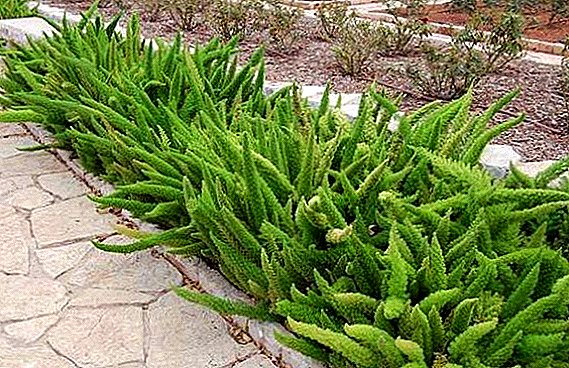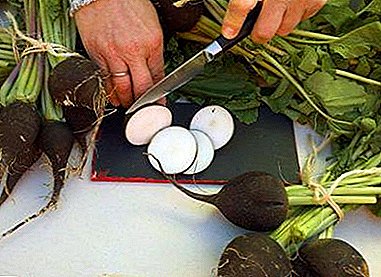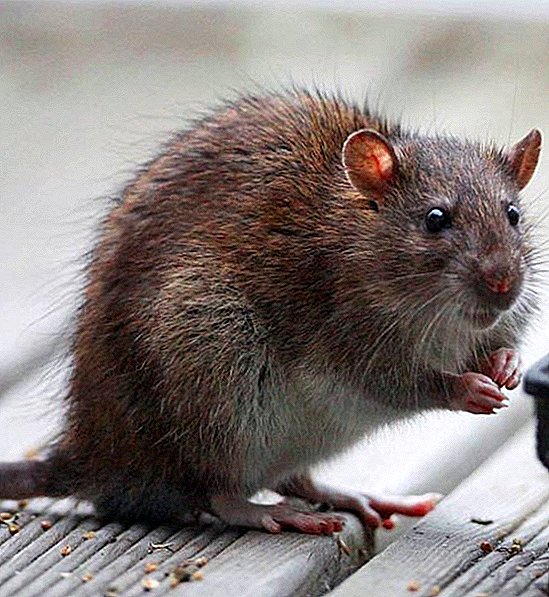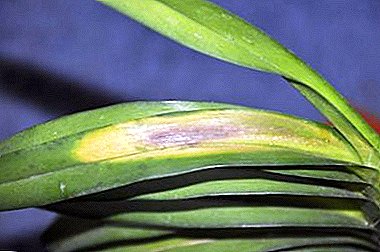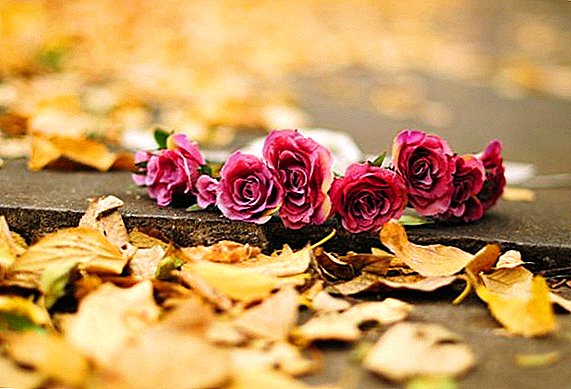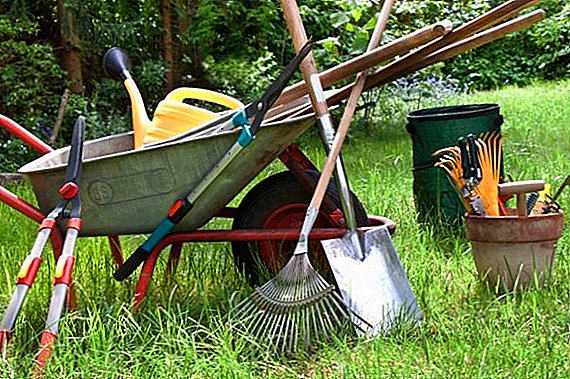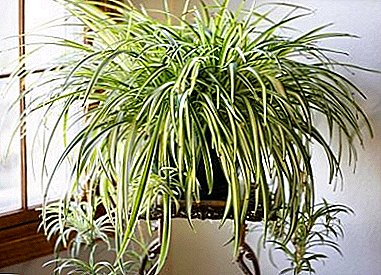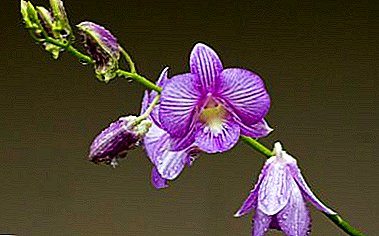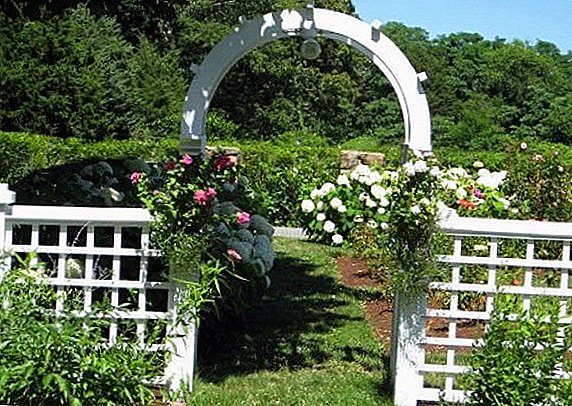 Vertical gardening is one of the areas of landscape design used for decorating, transforming, masking and gardening vertical planes, as well as for zoning the summer cottage.
Vertical gardening is one of the areas of landscape design used for decorating, transforming, masking and gardening vertical planes, as well as for zoning the summer cottage.
Beauty and Benefits (Vertical Gardening Features)
The way to plant vertical surfaces in any space gives a lot of space for the realization of designer fantasies. This is one of the easiest and most accessible options for decorating buildings and walls. The speed with which plants grow, their flexibility, the variety of shapes of inflorescences, the color of leaves, flowers and fruits help designers create unique designs.
Did you know? That the tallest green wall in the room is 65 meters tall. She is in Canada, in Quebec. For its creation was used 11,000 plants. This wall is a real system for cleaning the air in the building.
 Vertical surface gardening performs the following functions:
Vertical surface gardening performs the following functions:- creating a hedge, background, wall of flowers;
- the separation of certain parts of the landscape from each other or from the external environment;
- It is an additional protection against wind, sun, noise, dust;
- disguise unsightly structures;
- allocation, zoning of space with various functional purposes: places for walking, recreation, sports grounds, playgrounds;
- compliance with the established norms of city landscaping.
Coniferous plants are well suited for a hedge: berry yew, spruce, western thuja, common juniper, virgin juniper.
Ways and designs
For vertical gardening in the country you do not need to hire a designer, planting technology is simple and you can do it yourself. Think about what kind of support will fit the style of your home, garden and will visually fit the climbing plant. Remember that a beautiful and well-positioned support will emphasize all the advantages of green spaces, and the unsuccessful one will shame even a luxurious liana. 
Pergola
Pergola is one of the ancient elements of decorating a garden plot. It creates a special, unique atmosphere. Pergolas can be erected around the house, can serve as a ceiling over the passing path, they are entwined with greenery or not, they themselves are a decoration of the garden.  With the help of a pergola it is possible to solve such problems as:
With the help of a pergola it is possible to solve such problems as:
- combine some elements of the garden;
- to decorate the house;
- make the site original, unique, cozy;
- create shady corners;
- camouflage, decorate some buildings;
- divide the area into zones.
 The minimum height of the pillars must be equal to 250 cm, and the width of the structure must be greater than the height, otherwise it will look ugly. As a rule, pergolas are built of wood, but mixing of materials is allowed.
The minimum height of the pillars must be equal to 250 cm, and the width of the structure must be greater than the height, otherwise it will look ugly. As a rule, pergolas are built of wood, but mixing of materials is allowed.Important! Do not plant the plants at each pillar of the pergola. Pergola should be transparent, some pillars should remain free.
Rope stretch
For garden zoning, several pillars of roughly treated wood can be used, interconnected by sagging ropes, chains or ropes. This design can be beaten with the help of wild grapes, clematis, climbing roses, it becomes light and elegant. This design is liked to be used in the Bagatel Garden (Paris) or in Regent’s Park (London). 
Using Hedge
A hedge is a pedestal created from an ordinary wooden fence or a screen on which climbing roses, creepers or wild grapes were allowed. The result is a light green design, creating a pleasant partial shade.
To create a hedge ideal wild grapes, decorative beans, a variety of vines, ipomoea.
Arch
The arch in landscape design is presented in the form of a vaulted or straight ceiling, located between the two pillars. It is made of different materials, it can be metal, brick, stone or wood. It can harmoniously connect the two parts of the garden, being a transition from one to another.  The place for the arch is chosen with meaning - through the arch of the arch should look at something beautiful: a lake, an original tree, a statue, a flowering bush ...
The place for the arch is chosen with meaning - through the arch of the arch should look at something beautiful: a lake, an original tree, a statue, a flowering bush ...
When creating an arch, consider its height and width. When passing, climbing plants should not cling to clothes or hair. The minimum dimensions of the arch should be 150 cm wide, 220 cm high with a side wall of the arch 60 cm.
The use of several arches bordering the track on the site, at some distance from each other - visually lengthens the space, there is a "tunnel effect". Clematis, honeysuckle, ipomeia, climbing rose are the best decoration of arches. 
Metal grill
Metal grilles are used in garden fence fences, which either divide the site into several green areas, or hide flaws beyond the boundaries of the site.
Metal lattices are fastened in any necessary place: to the wall of the building, to the fence, between the pergola spans. Liana, uvivaya lattice, form a green wall of plants.
Hanging container
Capacity is used, which can be of any shape, any size, different in the way of fastening. It is filled with a special nutrient mixture, mixed with special moisture-absorbing substances and mineral fertilizers in the form of granules. Plants used for planting in a container must be wind-resistant and easily tolerate heat and drought. 
Did you know? The country with the largest variety of vertical gardens is Singapore, their length is 64,000 square meters.
Flower container
If it is impossible to break a bed of flowers in front of the house, the idea of vertical growing flowers will come to the rescue. With the decoration of the terraces hanging vases with ampelous flowers (petunia, begonia, pelargonium) are excellent.  If you have a small piece of land, then you can break a pyramidal flowerbed on it. To create such a bed you will need several boxes with different diameters, they are filled with earth and placed on top of each other. The largest and widest is at the bottom, and, accordingly, the smallest - crowns the structure.
If you have a small piece of land, then you can break a pyramidal flowerbed on it. To create such a bed you will need several boxes with different diameters, they are filled with earth and placed on top of each other. The largest and widest is at the bottom, and, accordingly, the smallest - crowns the structure.
In this design grow well:
- ampelous petunias;
- marigold;
- majors;
- asters;
- spices;
- ferns.

Decoration of facades and fences
One of the interesting options for landscaping facades and fences are hanging pockets, which are fixed on the fence or wall of the building. In an apron with numerous pockets fall asleep nutrient mixture and planted herbs.  It is also interesting to decorate the wall or the fence will help small boxes, located vertically or with the creation of a certain pattern, they put flowers and herbs that do not require an abundance of moisture and nutrients.
It is also interesting to decorate the wall or the fence will help small boxes, located vertically or with the creation of a certain pattern, they put flowers and herbs that do not require an abundance of moisture and nutrients.
The best plants for landscaping
For vertical landscaping in landscape design using perennial and annual plants.
In order that the end result does not disappoint, you must adhere to some rules:
- clearly represent the picture conceived. Think about where and what plants to plant, so that the compositions look harmonious;
- to choose the right flower stalks, their combinations. To create a hedge use some plants, for arches - others;
- compliance with vertical gardening technology. Plants are planted near supports, attached to them, and later seedlings develop and twist them around.
 Crops that grow well on the north side, in shade and partial shade, include:
Crops that grow well on the north side, in shade and partial shade, include:- grapes;
- Capuchin;
- camellia;
- ivy;
- escalonia with large flowers;
- Chubushnik
- wisteria;
- cord;
- California carpenterium;
- large-flowered magnolia.
 For cultures that feel good on the south and east side, include:
For cultures that feel good on the south and east side, include:- japonica;
- the Rose;
- Chinese lemongrass;
- hydrangea;
- clematis;
- honeysuckle;
- wisteria;
- magnolia;
- pyracantha.
Perennials
 Perennial vines are divided into groups:
Perennial vines are divided into groups:
- curly - these are creepers capable of wrapping themselves around a support (lemongrass, honeysuckle, hops, actinidia, and others);
- leaf liana - plants that encircle the support with the help of leaf stalks (clematis, prince);
- leaning - plants that need to be tied to a support, since they themselves do not have such an opportunity (climbing rose);
- ukusonosnye - plants that have the ability to fasten to the support with the help of antennae (grapes, sweet peas);
- corneal - plants that have the ability to attach to a support using aerial roots (hydrangea).
Important! When planting vines on a wall, it is necessary to remember that the surface decorated with original flowers is beautiful until the growing season has passed; in winter, the wall is "decorated" with bare plants. It is necessary to carefully consider the choice of a plant that serves as a wall decoration.
Annuals
Annual plants are quite capricious, they do not like frosts and sudden changes in temperature. Their seedlings are planted in specially designated places in late May - early June.  The most common and favorite to use are:
The most common and favorite to use are:
- ampelous petunias;
- marigold;
- lobelia;
- brachycom;
- purslane;
- decorative beans.
Original ideas for landscaping apartments and offices
The desire to decorate boring walls, to create an original interior - a corner of wildlife is one of the popular ways to decorate and revive an apartment, office, restaurant.  Creating a vertical garden in the apartment contributes to the fact that:
Creating a vertical garden in the apartment contributes to the fact that:
- the microclimate is improved in the apartment, office, restaurant due to humidification and saturation of the air with oxygen;
- mobile phytomodules used for landscaping do a good job with the task of zoning a room;
- decorated interior;
- plants do not take up much space.
Important! If you have no experience how to care for a vertical garden, then first you need to get the plants as unpretentious as possible.
 The apartment looks interesting as the whole green walls, and small living paintings. To create them use the following plants:
The apartment looks interesting as the whole green walls, and small living paintings. To create them use the following plants:- Amur grape, Chinese magnolia vine, fern;
- fittonia, chlorophyta, spathyllum;
- sansveviera, succulents;
- hoya, philodendron.
 This decoration has several advantages:
This decoration has several advantages:- Moss is a plant with a long life, unpretentious and does not require special care;
- does not cause allergies;
- is an evergreen plant.


